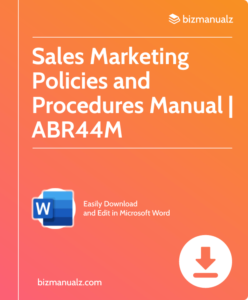What’s The Order of Recording Transactions?

The significance of documenting transactions cannot be overstated. Doing so correctly creates precise financial records, upholds compliance to laws, and helps make better decisions. It’s a basis for a business that is efficient and honest. What’s the order of recording transactions?
The Importance of Properly Recording Transactions
Errors in financial statements, inaccurate assets and liabilities, and difficulty monitoring cash flow could arise when transactions aren’t recorded accurately. This also allows businesses to keep and eye on their income and expenses, giving them and accurate reflection of their financial standing.
In addition, proper recording of transactions permits easy access to information when needed. By keeping records orderly, businesses can find data for audits, taxes, or any other legal necessities quickly. This saves time and resources from having to search for documents.
One real-life example of why recording transactions is so important happened with a small retail business that didn’t keep track of cash register sales properly. This caused incorrect revenue reports and tax underpayment. The business consequently suffered from penalties from the tax authorities and lost customer trust.
The Order of Recording Transactions
Accurate financial records are key. To make sure they’re in order, here are four steps to follow:
- Spot the transaction: Figure out which financial activity needs to be recorded, like sales, purchases, expenses, etc.
- Gauge the impact: Work out which accounts will be debited and credited, based on the nature of the transaction.
- Note it down: Use a journal or ledger to document the transaction details, like date, description and amounts.
- Post to the general ledger: Transfer the details from the journal to the general ledger. This helps keep track of all the changes in each account over time.
Also, remember to follow accounting principles and stay accurate throughout the process. Don’t forget to adjust entries at specific times, such as when preparing financial statements or at the end of and accounting period. For reliable guidelines on recording transactions, check out the Financial Accounting Standards Board (FASB) Generally Accepted Accounting Principles (GAAP).
Pre-Sale Transactions
Perform pre-sale transactions before the actual sale! These are crucial for recording financial activities accurately. They showcase the professionalism and efficiency of any business. Table 1 highlights key info such as dates and descriptions.
It ensures comprehensive documentation of transactions, helping businesses maintain a systematic approach. Order quantity, prices, and associated costs must be included. This allows for better analysis and decision-making.
Pro Tip: Double-check the accuracy of recorded data to minimize errors. Meticulousness is essential for tracking transactions effectively.
Sales transactions are like a rollercoaster ride – filled with the sound of cash register cha-chings!
Sales Transactions
Sales transactions are essential for businesses. They’re the exchange of goods or services for money. Keeping track of them is vital to maintain accurate financial records and analyze business performance. Let’s look at and example with a table.
| Date | Customer | Product | Quantity | Price |
|---|---|---|---|---|
| 2021-01-05 | ABC Company | Product A | 10 | $50 |
| 2021-01-08 | XYZ Corporation | Product B | 5 | $75 |
| 2021-01-12 | Blue Enterprises | Service C | n/a | $100 |
| 2021-01-16 | DEF Incorporated | Product D | 8 | $60 |
| 2021-01-20 | PQR Co. Ltd. | Service E | n/a |
This table has the components of a sales transaction. Date is when it happened. Customer is who made the purchase. Product or service is what was bought/sold. Quantity is the number of units. and price is the cost per unit.
Plus, sales transactions can have extra info like discounts, taxes, shipping costs, etc. It’s important to keep detailed and accurate records of sales transactions to make financial analysis and decisions. Reviewing records often helps identify trends, manage inventory, and optimize pricing strategies for better profits.
Pro Tip: Post-Sale Transactions are where the money starts to really flow! Accountants might even consider becoming professional gamers.
Post-Sale Transactions
Post-Sale Transactions: Get ready to explore the table below!
| Transaction Type | Description |
|---|---|
| Returns | Customer returns product or requests refund |
| Exchanges | Exchange one product for another – customer preference |
| Refunds | Refund customer payment due to various reasons |
| Credit Issuance | Give customers store credits instead of monetary refunds |
| Gift Card Redemption | Customers redeem gift cards as payment |
Now, let’s get into some unique details. Returns need documentation, including reasons and product condition. Exchanges let customers switch products without re-buying. Refunds are processed using the original payment method.
To make sure Post-Sale Transactions go smoothly, try these tips:
- Set up a returns management system to make the process easier and faster.
- Explain refund policies to customers and staff to avoid confusion.
- Train staff on the different transaction types to minimize errors.
- Use technology tools like point-of-sale systems to automate transaction processing.
By following these tips, businesses can improve their post-sale operations and make sure customers get prompt resolutions to any issues they have after buying.
Common Issues in Recording Transactions
Recording transactions is complex and can lead to inaccuracies in financial records, negatively impacting the system’s integrity. Common issues include:
- Picking the wrong account: Transactions with multiple accounts or unclear natures can be tricky to record.
- Inconsistent recording: Different employees or departments may use different procedures, creating discrepancies.
- Lack of documentation: Transactions must be supported by documents like invoices, receipts, and contracts.
To ensure accurate financial reporting, establish clear guidelines and processes. Create a chart of accounts to guide each transaction type. Also, hold regular training sessions; these help employees understand proper procedures and document preparation.
Following these suggestions improves transaction recording, minimizes common issues, and ensures compliance with accounting standards. Thus, accuracy and credibility are enhanced for financial reporting.
Best Practices for Recording Transactions
Recording transactions is a must for accurate financial records. It documents and analyzes all business activities, making it easier to manage finances. Here’s a 3-step guide for best practices:
- Identify the transaction. Is it a sale, expense, or purchase? Knowing this helps pick the right account.
- Record the transaction. Use relevant accounts and assign a unique reference number or code.
- Review and reconcile. Check if recorded data matches actual financial activities. Reconciliation ensures accuracy.
Legal requirements vary by jurisdiction, so be sure to stay updated with applicable laws and regulations.
In ancient times, merchants recorded transactions by notching tally sticks – wooden sticks with symbols. This verified their shares of the transaction. Now, businesses can use software and digital solutions to record transactions faster and more accurately.
You now know how to be a ninja in recording financial activity!
Recording Transactions
It is essential to record transactions in order. Starting with the date of the transaction and recording them chronologically helps organize the financial data. Each transaction must include details such as the nature of the transaction, people involved, and the amount.
Classifying transactions accurately based on their type is key for efficient categorization of income, expenses, assets, liabilities, and equity. It’s necessary to double-check entries and ensure accuracy, as mistakes or omissions could have serious consequences.
Technology is a great help when it comes to recording transactions. Accounting software and automated systems make the process simpler, and reduce the risk of errors.
Finally, reviewing and reconciling recorded transactions with bank statements can uncover discrepancies or potential frauds. This increases financial transparency and safeguards businesses from financial risks.
Frequently Asked Questions

Q1: What is the order of recording transactions?
A1: The order of recording transactions is typically done in chronological order, starting with the earliest transaction.
Q2: Why is it important to record transactions in a specific order?
A2: Recording transactions in a specific order ensures accuracy and consistency in financial records. It allows for proper tracking and analysis of financial activities.
Q3: Can the order of recording transactions be changed?
A3: Generally, it is not recommended to change the order of recording transactions once they have been entered. However, in certain circumstances, such as correcting and error, adjustments can be made while maintaining a clear audit trail.
Q4: What are the commonly used methods for recording transactions?
A4: The commonly used methods for recording transactions include manual entry in accounting journals or ledgers, computerized accounting systems, and online accounting software. The choice of method depends on the organization’s size, complexity, and preferences.
Q5: Should I record every transaction, no matter how small?
A5: It is generally recommended to record every transaction, regardless of its size. This ensures completeness and accuracy of the financial records, and helps in providing a clear picture of the business’s financial health.
Q6: Are there any specific rules or guidelines for recording transactions?
A6: Yes, there are specific rules and guidelines for recording transactions, known as Generally Accepted Accounting Principles (GAAP). These principles provide a framework to ensure consistency, accuracy, and transparency in financial reporting.

















Leave a Reply